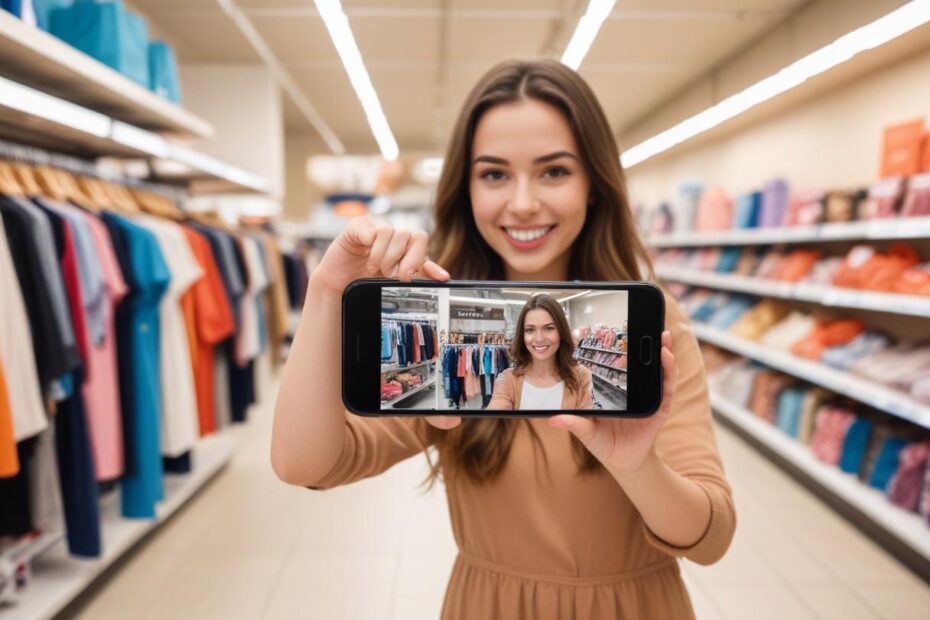Live Streaming vs. Pre-Recorded Videos: Which Is Better for Shopping?
When it comes to shopping, live streaming offers a unique and interactive experience that pre-recorded videos simply can’t match. With live streams, customers can engage in real-time with hosts, asking questions and receiving instant feedback, creating a sense of personal connection that enhances the shopping experience. Additionally, live streaming allows for spontaneous product demonstrations and showcases unrehearsed authenticity that resonates with consumers seeking genuine interactions.

On the other hand, pre-recorded videos offer a more polished and curated presentation of products, allowing shoppers to access content at their convenience without having to adhere to a specific schedule. These videos provide detailed product information that viewers can revisit multiple times, making them ideal for consumers who prefer a more controlled and structured shopping experience. However, they may lack the excitement and engagement that live streaming brings through its interactive nature.
Introduction: Exploring shopping trends in video content.
In the ever-evolving landscape of digital marketing, video content has emerged as a dominant force in shaping consumer behavior. This is particularly evident in the realm of shopping trends, where videos play a crucial role in influencing purchase decisions. Live streaming, with its real-time interactions and immersive experiences, has become increasingly popular among consumers looking for authentic engagement with brands. On the other hand, pre-recorded videos offer a polished and curated shopping experience that appeals to those seeking well-crafted product showcases.
When exploring shopping trends in video content, it’s essential to consider how each format caters to different consumer preferences and behaviors. While live streaming allows for immediate feedback and spontaneity, pre-recorded videos provide viewers with carefully planned narratives and visually appealing presentations. These nuances can significantly impact the way consumers perceive products and make purchase decisions. By delving deeper into these dynamics, marketers can harness the power of video content to create more personalized shopping experiences that resonate with their target audience.
To truly understand the impact of video content on shopping trends, we must also acknowledge the influence of social media platforms in shaping consumer behaviors. With platforms like Instagram and TikTok becoming hotbeds for shoppable content, brands have an unprecedented opportunity to connect with audiences through engaging videos. Leveraging features like tags and interactive elements, marketers can seamlessly integrate product information into their videos, making it easier for viewers to make informed purchase decisions directly from their screens. As we navigate this evolving landscape of video-driven shopping experiences, it’s clear that adapting strategies to align with changing consumer preferences will be key to success in an increasingly competitive market.
Pros of Live Streaming: Real-time engagement with audience.
Live streaming has revolutionized the shopping experience, offering a real-time connection between brands and consumers. The interactive nature of live streams allows for instant feedback, creating a sense of urgency and exclusivity that pre-recorded videos may not replicate. Watching a live stream can feel like a personalized shopping experience, with influencers or brand representatives engaging directly with viewers to answer questions or provide demonstrations.
On the other hand, pre-recorded videos offer more polished and scripted content that can be tailored to specific audiences. These videos allow for better editing and control over the final product, ensuring a high-quality presentation of products or services. For shoppers who prefer a more refined and curated viewing experience, pre-recorded videos may be a better option as they eliminate the unpredictability of live broadcasts. Ultimately, both formats have their strengths and it often comes down to personal preference and the type of shopping experience one is looking for.
Cons of Live Streaming: Limited editing and control.
When it comes to live streaming, one prominent drawback is the limited editing and control over the content being broadcasted. Unlike pre-recorded videos where creators can carefully edit out any mistakes or unwanted content, live streams offer little room for error correction. This lack of control can be particularly concerning for brands looking to maintain a polished image and ensure a seamless shopping experience for their audience.
Furthermore, the inability to edit live streams means that once something is said or done on camera, it’s out there for viewers to see in real-time. This can be risky as mistakes or inappropriate behavior cannot be easily rectified after the fact. The pressure to perform flawlessly without the safety net of post-production edits adds an element of unpredictability that may deter some businesses from fully embracing live streaming as a marketing tool.
Pros of Pre-Recorded Videos: Higher quality production value.
When it comes to the production value of videos, pre-recorded content stands out for its ability to deliver higher quality visuals and editing. Since pre-recorded videos allow for multiple takes, creators can ensure that each shot is perfect, resulting in a polished final product. This heightened production quality can make the content more engaging and professional, which is particularly beneficial when trying to showcase products or services.
Moreover, pre-recorded videos offer the opportunity for advanced post-production techniques such as adding special effects, animations, and graphics. These elements can enhance the overall viewing experience and capture viewers’ attention more effectively than live streams. By investing time into creating visually appealing pre-recorded content, businesses can leave a lasting impression on their audience and elevate their brand image.
Cons of Pre-Recorded Videos: Lack of real-time interaction.
One of the significant drawbacks of pre-recorded videos in the context of shopping is the lack of real-time interaction. While these videos may offer polished and curated content, they often fail to engage viewers in a way that live streaming can. The ability for customers to ask questions, seek clarifications, or receive immediate feedback is crucial in making informed purchasing decisions.
Furthermore, the absence of real-time interaction in pre-recorded videos can diminish the sense of authenticity and personal connection that customers crave when shopping online. Live streaming allows for more spontaneous interactions and genuine reactions from hosts or influencers, creating a dynamic and engaging shopping experience. Ultimately, when it comes to bridging the gap between consumers and brands, live streaming offers a more interactive and immersive platform compared to pre-recorded videos.
Comparison in Sales Conversion Rates.
When it comes to sales conversion rates, the comparison between live streaming and pre-recorded videos is crucial. Live streaming offers a sense of immediacy and authenticity that can greatly impact conversion rates. The real-time interaction with customers allows for personalized engagement, which can lead to higher levels of trust and ultimately, more sales.
On the other hand, pre-recorded videos offer a polished presentation that can be carefully crafted to highlight key selling points. These videos can be optimized for search engine visibility and shared across multiple platforms, potentially reaching a wider audience. However, the lack of interactivity in pre-recorded videos may limit their ability to convert viewers into customers compared to live streaming’s dynamic nature.
In conclusion, both live streaming and pre-recorded videos have their strengths when it comes to boosting sales conversion rates. Understanding the unique advantages of each format and utilizing them strategically based on your target audience’s preferences can help maximize your overall success in driving conversions.
Conclusion: Choosing the best approach for shopping needs.
In conclusion, when it comes to choosing the best approach for shopping needs between live streaming and pre-recorded videos, it ultimately boils down to personal preferences and the type of shopping experience one is seeking. Live streaming offers a real-time interaction with products, allowing for immediate questions and feedback, creating a sense of urgency in making purchases. On the other hand, pre-recorded videos provide a more curated and polished viewing experience, enabling viewers to access information at their own pace without time constraints.
Both approaches have their unique advantages and cater to different consumer needs. For those looking for an interactive shopping experience with real-time engagement, live streaming might be the way to go. Conversely, individuals who prefer a more controlled and detailed product showcase may find pre-recorded videos more appealing. Ultimately, understanding one’s shopping habits and preferences is key in determining which approach aligns best with individual needs for an enjoyable and seamless shopping experience.
Read more:










